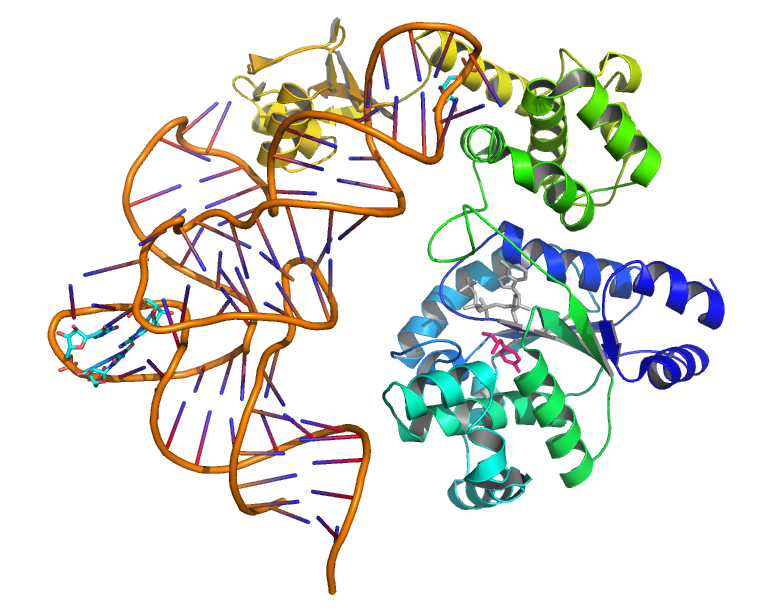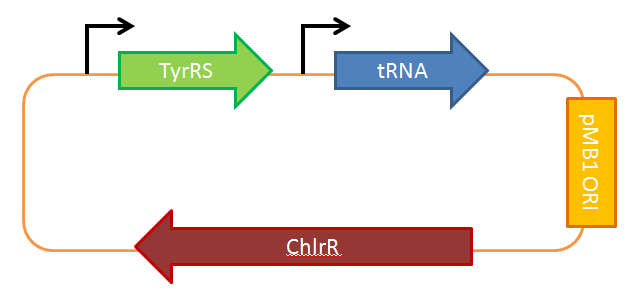Team:Greensboro-Austin/MAPs
From 2013.igem.org
Ryanlannan (Talk | contribs) |
Ryanlannan (Talk | contribs) |
||
| Line 23: | Line 23: | ||
= Project = | = Project = | ||
(insert abstract here) | (insert abstract here) | ||
| - | + | ||
Make mussel adhesive proteins (MAPs) using ''E. coli'' | Make mussel adhesive proteins (MAPs) using ''E. coli'' | ||
Incorporate unnatural amino acids | Incorporate unnatural amino acids | ||
Revision as of 02:06, 13 June 2013
Contents |
Project
(insert abstract here)
Make mussel adhesive proteins (MAPs) using E. coli Incorporate unnatural amino acids (How? Expand in Introduction. Stress novelty of idea.)
Natural vs. commercial underwater adhesives (Table of properties? Strengths, biocompatibility, cost, availability)
Benefits of synthetic MAPs (Why they're worth engineering)
Introduction
explain different surgical glues, downfalls of current natural ones, and emphasize potential of MAPS
Recombinant mussel adhesive proteins from Mytilus galloprovincialis
Explain properties of fp-1,2,3,4,5, dopamine, tyrosine, L-dopa, dopaquinone
explain fp 151 = fp 1 + 5 + 1
1 is a 6x repeat of 10 aa sequence
Study by (CITE SOURCE) showed that fp-151 was stickiest(?)
L-dopa can be produced through post-translational oxidation of tyrosines
---inefficient due to requirement of tyrosines from outside
Explain what RF1 does, and what suppressing it will do
-what is RF0, what strain (CITE SOURCE, give credit to lab)
-substitute ambers with some other stop codons so they still stop in RF0 strain
synthesize L-DOPA with UAAs to improve efficiency of production, and have more control on synthesis
-cell must incorporate L-dopa in tRNA/synthetase (name of plasmid, CITE SOURCE, credit the lab giving us plasmid)
Thus, AMBER codons are read as L-DOPA instead of STOP
PRIMARY GOAL: make MAPs with increased levels of L-DOPA, produced through in vivo UAA incorporation
future:
test different numbers of L-DOPAs in each of 3 geneblocks
express MAPs on cell surface, using Berkeley '09 mechanisms to get sticky microbes
or use purification techniques to extract product from the microbes
measure stickiness directly with materials techniques
measure stickiness in comparison with normal e coli (what % stick to glass in culture?)
directed evolution to obtain improved stickiness
-grow surface MAP-making e coli in flasks
---make sure e coli have the resources to mutate/incorporate L-DOPA normally
-wash the ones that didn't stick
-keep growing
-examine MAP structure after several generations
Strategy
Unnatural Amino Acid Incorporation
Previous studies have generated L-DOPA residues through post-translational modification (Choi et al. 2012, Hwang et al. 2007). However, this method has the disadvantage of less control of where L-DOPAs are incorporated and how efficient the process is. We will directly incorporate L-DOPA as an unnatural amino acid (UAA) into the MAP.
Successful UAA incorporation requires the addition of two components: a new tRNA synthetase and its corresponding tRNA. This pair must be orthogonal, meaning that they must be highly specific for each other and the UAA. The tRNA should also be complementary to the UAG stop codon (also known as the “amber” stop codon), which will be reprogrammed to code for the new UAA instead of termination.
Schultz et al. have developed a system for UAA incorporation. For a starting point, they obtained tyrosyl-tRNA and tyrosyl-tRNA synthetase from Methanococcus jannaschii.This pair was chosen since the tRNA synthetase doesn’t bind to the codon binding region on the tRNA, allowing it to be reprogrammed to bind to the amber stop codon. Through a series of positive and negative selection cycles on both the tRNA and the tRNA synthetase, they were able to create a functional UAA incorporation system. We will be employing Schultz’s L-DOPA pair as shown in the circuit diagram below.
However, this pair is not perfect, since it is not completely orthogonal and will sometimes incorporate tyrosine instead of L-DOPA. For future work, it is possible to evolve a better system that is more specific.
 "
"

